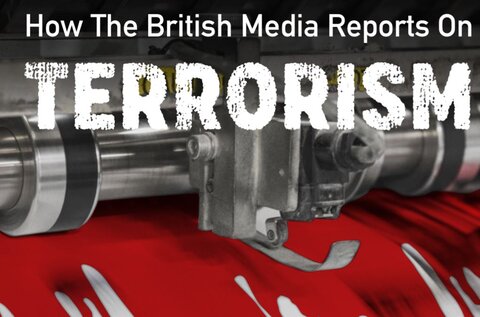Hawzah News Agency - (London - UK) - More than half of British news stories which mentioned terror, terrorists or terrorism also referred to Muslims or Islam, a new report has found.
This is almost nine times the amount perpetrators were identified as “far-right”, “neo-Nazi” or “white supremacist”, the analysis by the Muslim Council of Britain’s Centre for Media Monitoring (CfMM) said.
Rizwana Hamid, director of CfMM, said there was a “disproportionate focus” on Muslims and that headlines using terms such as “Allahu Akbar” implied that “religion is always the motivator”.
She added: “Whilst there now appears to be a recognition of the importance of consistency and the scale of the far-right threat amongst the broadcasters, and most of the press, there is still a long way to go.
“Inconsistencies remain, with a disproportionate focus on Muslims.
“Worst of all, headlines using religious terms such as ‘Allahu Akbar’ imply that religion is always the motivator, ignoring other factors such as criminal history and mental health issues which may be at play, and which are often mentioned when the perpetrator is not Muslim.
“However, in our interaction with editorial directors, managing editors, security correspondents and senior producers, there has generally been a willingness to reflect, and we hope our recommendations help improve standards for us all.”
The report, How The British Media Reports Terrorism, was based on an analysis of 16 terrorist attacks between 2015 and 2020 in America, Britain and Europe as well as the Christchurch attack.
The CfMM analysed more than 230,000 articles published in 31 mainstream British news websites, magazines and newswires, looking at the inconsistencies in the coverage of terrorist attacks depending on the background of the perpetrator.
Report author Fiasal Hanif, a former reporter for The Times, said:”Newspapers and online sources are driven by a commercial imperative to constantly produce clickbait and use algorithms and metrics to work out what sells, making the reporting of terrorism more of a science than an art. This can skew the coverage away from the particular realities of that single act.
“The ethnicity of the perpetrator is enough for some and in many cases is the most vital detail for editors and reporters when determining whether the tag of terror should be applied. The classification of incidents in mainland Europe have been predicated on the shouting of religious slogans or the mere suggestion that they might have been uttered according to a ‘witness’.
“Certain newsrooms take this as a sufficient basis of attribution, irrespective of its reliability.
“Others still wait for clearance from those in positions of power or authority to give their verdicts, sometimes failing to take into account possible conflicts of interest or the political spin being employed to limit any scrutiny of potential security failures.
“As the terror perpetrated by white supremacists in Christchurch, El Paso and Hanau has shown, it is impossible to justify that terrorism is the preserve of one group of people.
“The plethora of information that arises after so called terror attacks, such as the state of the perpetrators mental health, no substantial links to actual terror groups, a history of criminal activity etc., demonstrates that what journalists do not immediately know about a perpetrator is just as important as what can be verified. ”

